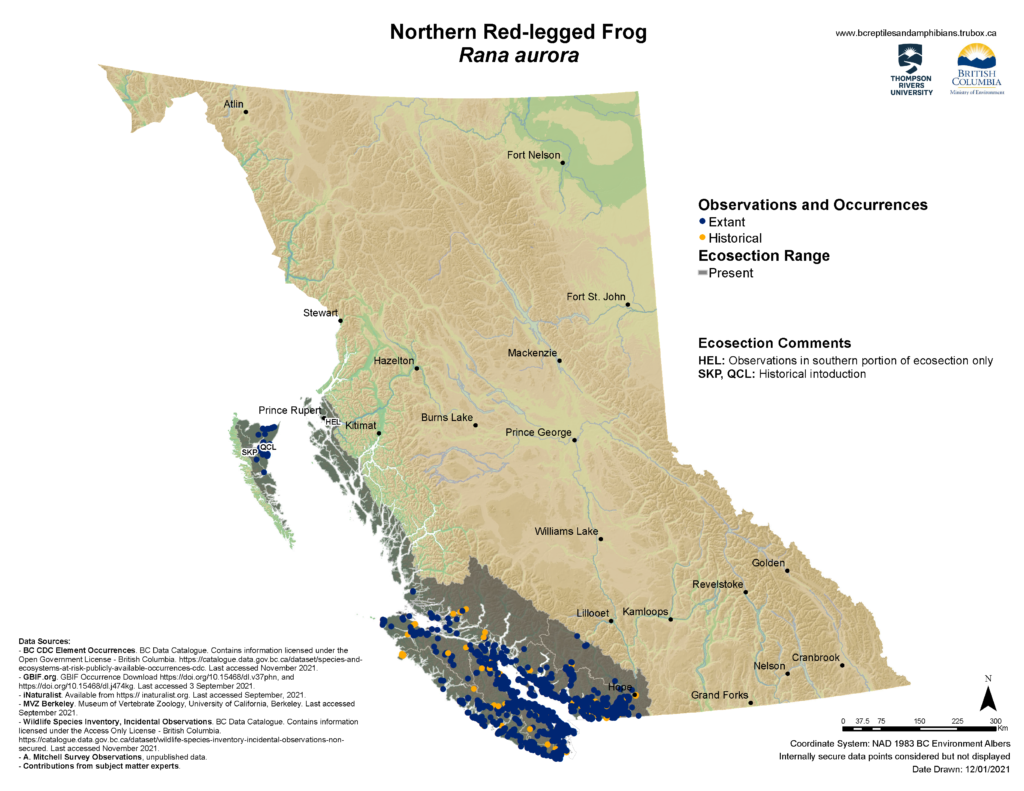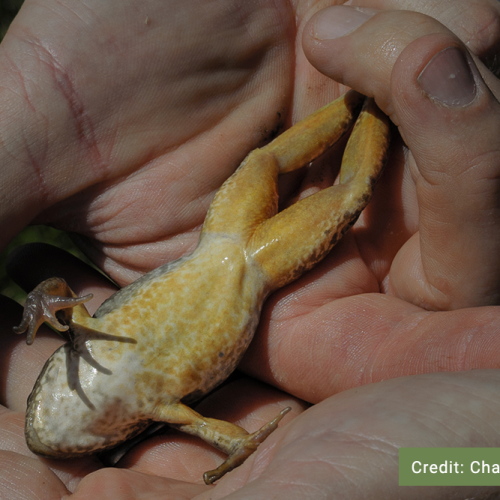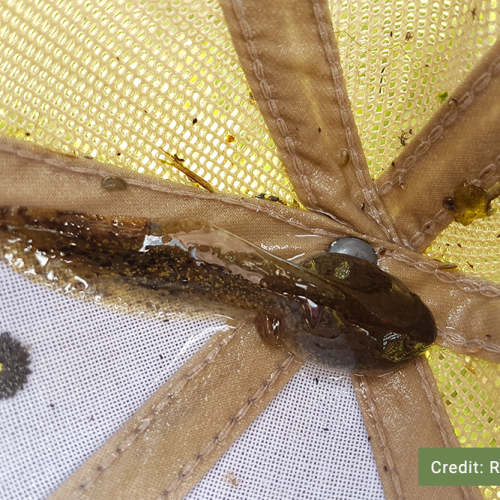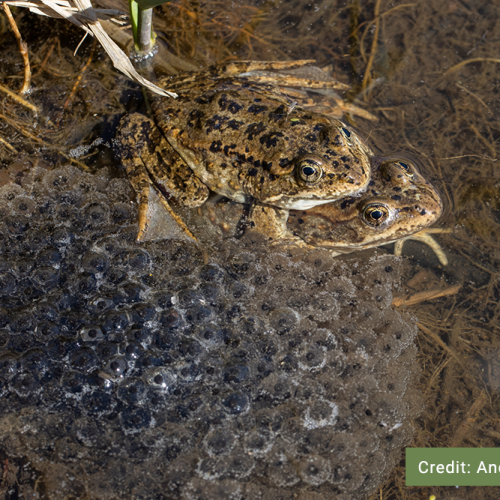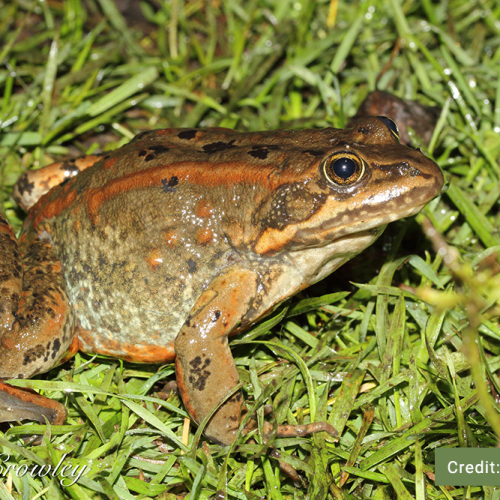Credit: John Clare
Northern Red-legged Frog
Rana aurora
Description
Other names: Rana aurora aurora
In British Columbia, the Red-legged Frog is represented as the Northern subspecies, Rana aurora aurora, that ranges into Washington, Oregon, and Northern California. Northern Red-legged Frogs are medium-sized, reaching body lengths up to 10-13 cm with females growing larger than males. They have an indistinct tympanumDefinition:The ear opening in many amphibians, reptiles, and insect. In amphibians, it is normally covered by a circular membrane. and the toes of the hindfeet are not fully webbed. The eyes are gold and oriented to the sides. The skin on the underside of the hind legs is translucent, such that bones may be seen through the skin. Northern Red-legged Frogs range in colour from reddish-brown to gray and may display dark speckling or blotching. In northern populations, these blotches do not have light centers. The throat and chest are light gray with red or black flecking. The belly is whitish, turning into red tinges on the lower belly and underside of legs, especially as the frog ages. Northern Red-legged Frog tadpoles have long tails with a large tail fin. They are tan or brown with gold flecking and the tail fin has a gold tinge with dark spots. Tadpoles will typically reach 8 cm in length before metamorphosis.
Listen to the Indigenous words for “frog” here!
Northern Red-legged Frog Call
The call of the Northern Red-legged Frog is a weak, throaty series of low-pitched pulses lasting 2-3 seconds, sometimes likened to a stuttering sound. Red-legged Frog calls often do not carry very far as they typically call from underwater.
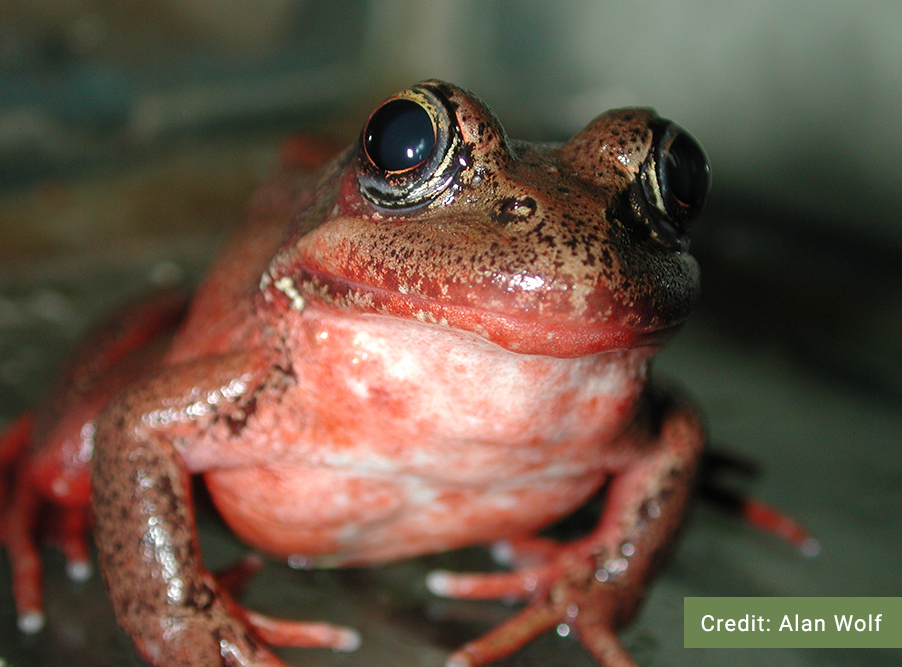
Northern Red-legged Frog Call
The call of the Northern Red-legged Frog is a weak, throaty series of low-pitched pulses lasting 2-3 seconds, sometimes likened to a stuttering sound. Red-legged Frog calls often do not carry very far as they typically call from underwater.
Similar Species
Northern Red-legged Frogs may be easily confused with the Oregon and Columbia Spotted Frogs, which have a similar body shape and may have a reddish underside. However, in Spotted Frogs, the skin on the underside of the body is not semi-translucent. The eyes of Spotted Frogs are also angled upwards, whereas the eyes of the Northern Red-legged Frog are angled outward. Spotted Frogs have complete webbing on the hind feet that extends to the tips of the toes, whereas the Northern Red-legged Frog has incomplete webbing on the hindfeet. The distributions of the Northern Red-legged Frog and the Columbia Spotted Frog do not overlap, so they can be differentiated by location.
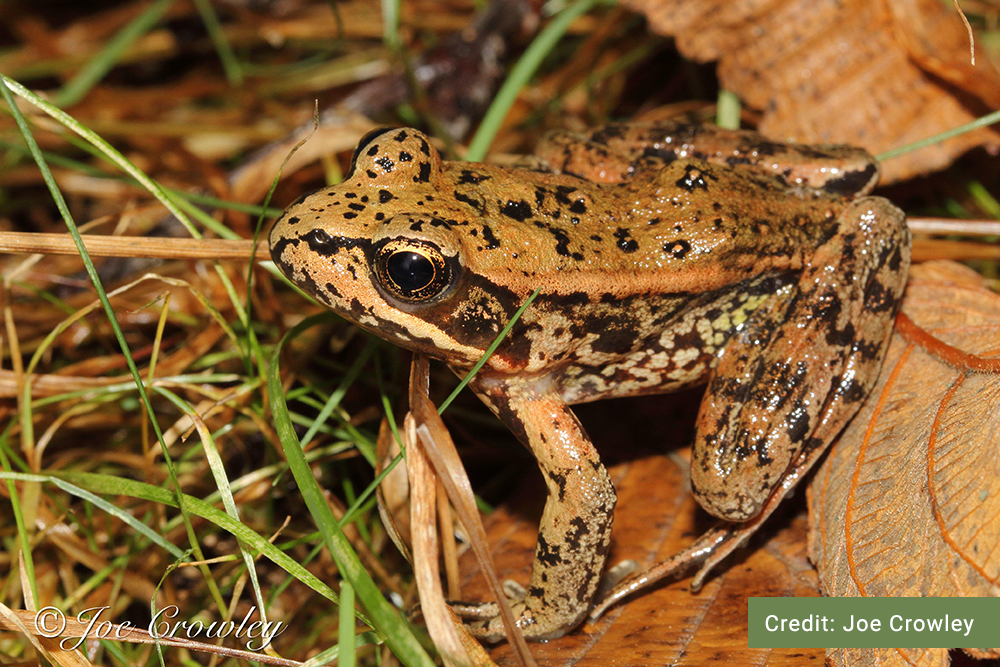
Northern Red-legged Frog
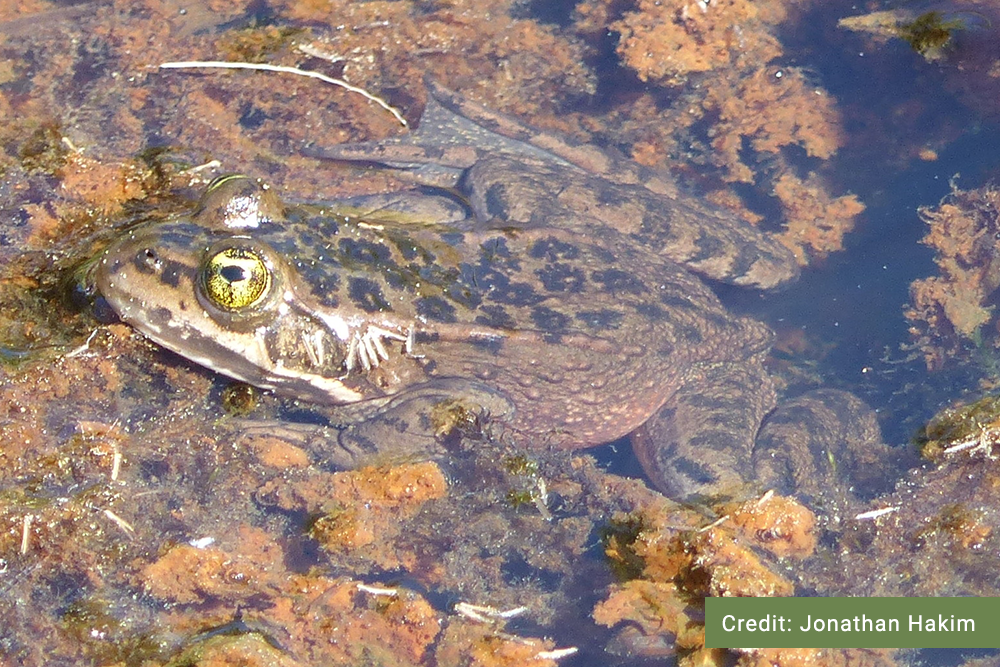
Oregon Spotted Frog

Columbia Spotted Frog
Distribution
Habitat

Reproduction
Breeding occurs early on in the active season, in late winter or early spring. Males will call from underwater to attract females immediately after ice recedes. Fertilization occurs externally as the male grasps the female in amplexusDefinition:The mating position of frogs and toads in which the male clasps the female about the back.. Females will lay anywhere from 300-5,000 eggs that are almost always attached to vegetation submerged beneath the surface in the deepest water available. Hatching occurs after 6-14 days depending on water temperature. Tadpoles will generally undergo metamorphosis after 3-7 months, although some will overwinter and transform after 12 months in larval stage. Males reach sexual maturity at 2 years, compared to females at 3 years. The lifespan of the Northern Red-legged Frog is 8-10 years.
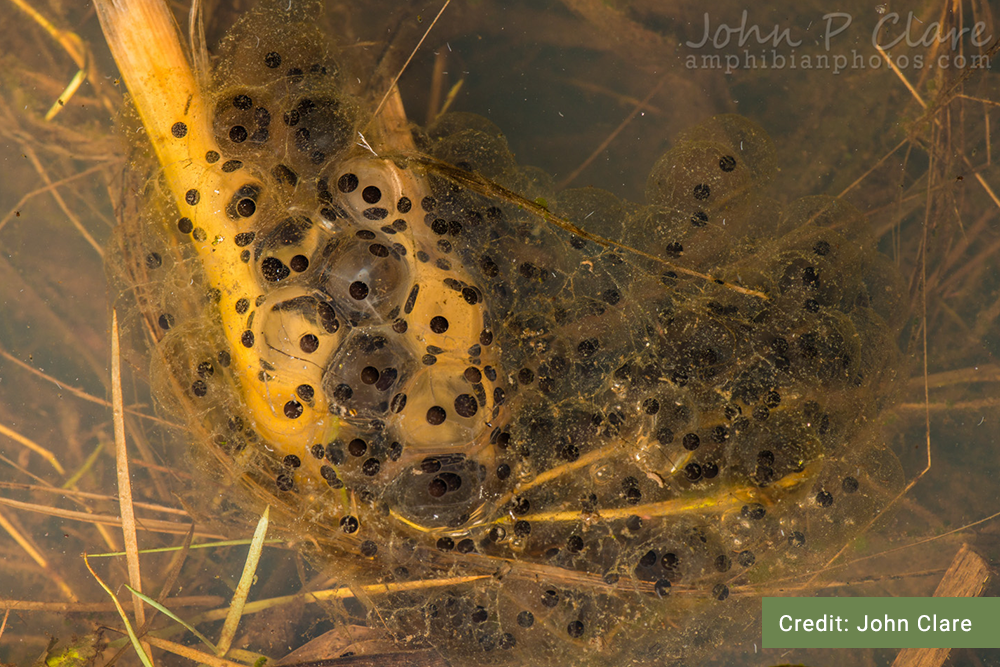
Diet
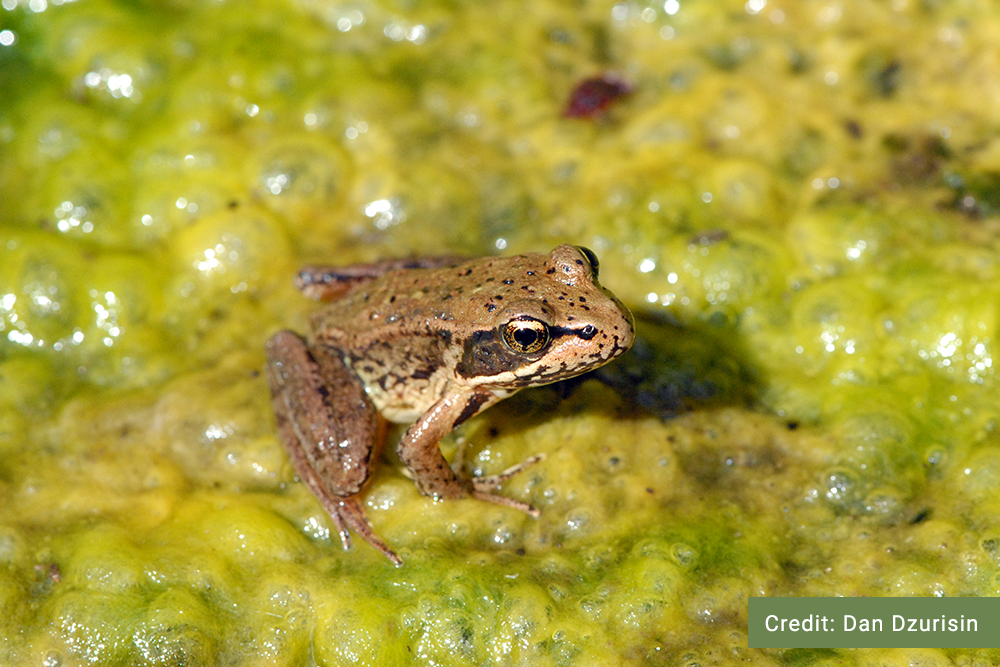
Conservation Status
Global: G4 (2015)
COSEWIC: SC
SARA:1-SC (2005)
Provincial: S3 (2016)
BC List: Blue
Learn more about conservation status rankings here
Threats
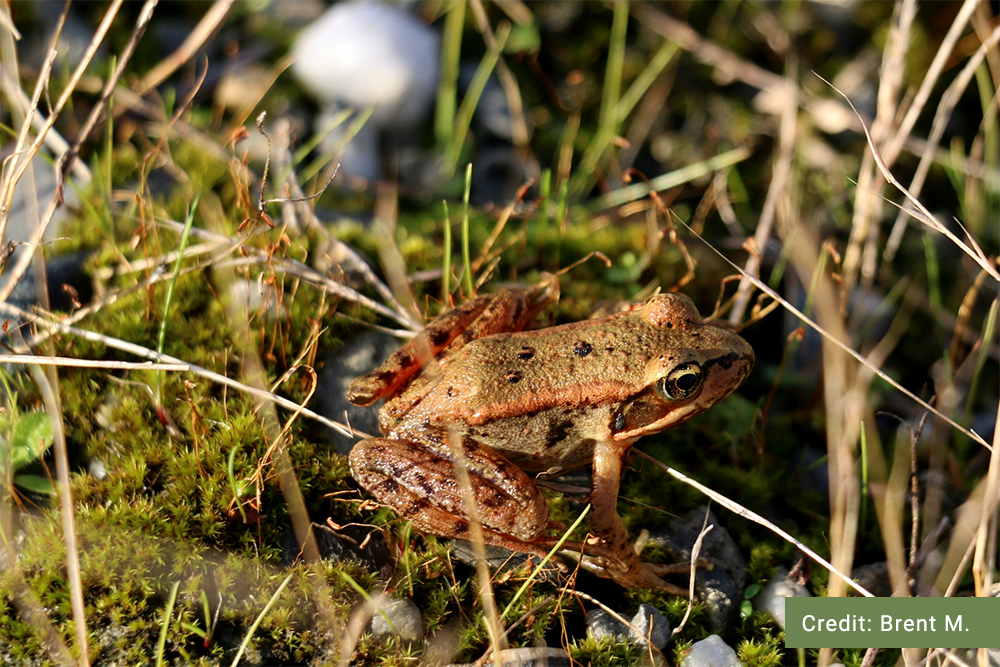
Did You Know?
Fact #1
Fact #2
Species Account Author: Marcus Atkins
Available:https://a100.gov.bc.ca/pub/eswp/ (accessed May 26, 2021).
B.C. Conservation Data Centre. 2021. BC Species and Ecosystems Explorer. B.C. Minist. of Environ. Victoria, B.C.
Available:https://a100.gov.bc.ca/pub/eswp/ (accessed May 26, 2021).
B.C. Ministry of Environment. 2015j. Recovery plan for the Northern Red-legged Frog (Rana aurora) in British Columbia. B.C. Ministry of Environment, Victoria, BC. 51 pp.
COSEWIC. 2015c. COSEWIC assessment and status report on the Northern Red-legged Frog Rana aurora in Canada. Committee on the Status of Endangered Wildlife in Canada. Ottawa. xii + 69 pp.
Environment and Climate Change Canada. 2017f. Management Plan for the Northern Red-legged Frog (Rana aurora) in Canada. Species at Risk Act Management Plan Series. Environment and Climate Change Canada, Ottawa. 2 parts, 4 pp.+ 51 pp.
Matsuda, Brent, David M. Green, and Patrick T. Gregory. 2006. Amphibians and Reptiles of British Columbia. Handbook. Royal BC Museum, Victoria.
Shean, J. T. S. 2002. Post-breeding movements and habitat use by the Northern Red-legged Frog, Rana aurora aurora, at Dempsey Creek, Thurston County, Washington. M.Sc. Thesis, Evergreen State College, Olympia, Washington, U.S.A.
https://www.naturewatch.ca/frogwatch/Red-legged-frog/
http://a100.gov.bc.ca/pub/eirs/viewDocumentDetail.do?fromStatic=true&repository=BDP&documentId=3464
http://canadianherpetology.ca/species/species_page.html?cname=Northern%20Red-legged%20Frog#:~:text=The%20Northern%20Red%2Dlegged%20Frog,and%20sometimes%20larger%20dark%20spots.
http://linnet.geog.ubc.ca/efauna/Atlas/Atlas.aspx?sciname=Rana%20aurora https://www2.gov.bc.ca/gov/content/environment/plants-animals-ecosystems/conservation-data-centre/explore-cdc-data/species-and-ecosystems-explorer

